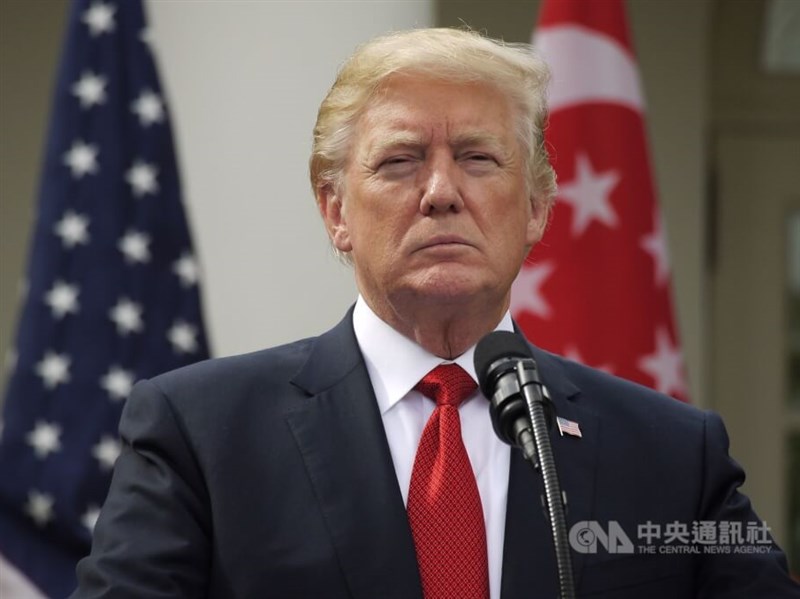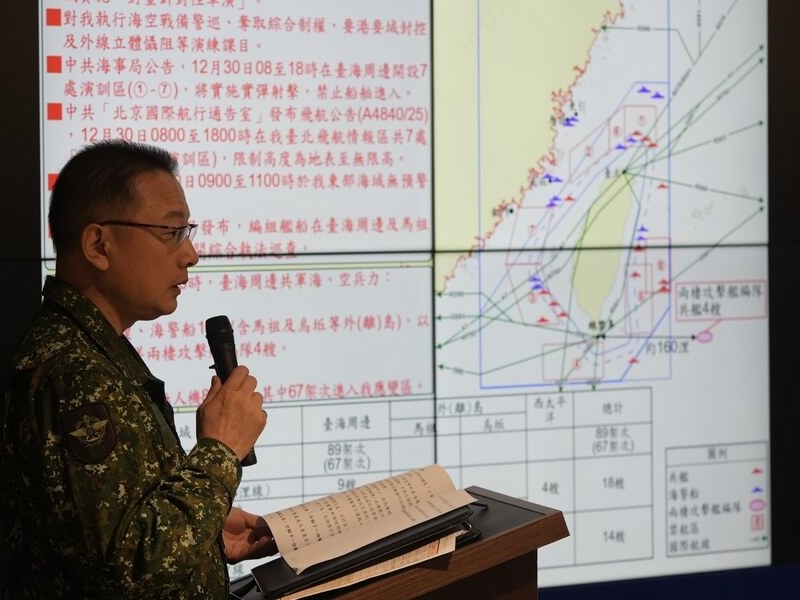DEFENSE/Taiwan, U.S. quiet over latest transit by U.S. warship through Strait
04/24/2025 09:07 PM
The United States and Taiwan have been unusually quiet over the most recent passage of an American Navy warship through the Taiwan Strait that began late Tuesday evening, Taiwan time.
(Full text of the story is now in CNA English news archive. To view the full story, you will need to be a subscribed member of the CNA archive. To subscribe, please read here.)
More in DEFENSE
![Trump 'not worried' as China stages live-fire exercises around Taiwan]() Trump 'not worried' as China stages live-fire exercises around TaiwanU.S. President Donald Trump said Monday that Chinese President Xi Jinping (習近平) had not informed him in advance of China's ongoing military exercises around Taiwan, adding that he was "not worried" about the operation.12/30/2025 12:19 PM
Trump 'not worried' as China stages live-fire exercises around TaiwanU.S. President Donald Trump said Monday that Chinese President Xi Jinping (習近平) had not informed him in advance of China's ongoing military exercises around Taiwan, adding that he was "not worried" about the operation.12/30/2025 12:19 PM![PLA drill areas within Taiwan's territorial waters: Taiwan military]() PLA drill areas within Taiwan's territorial waters: Taiwan militaryParts of all five of the drill zones designated by the People's Liberation Army (PLA) for live-fire drills Tuesday are within Taiwan's territorial waters, Taiwanese military officials said Monday, calling the move "irresponsible."12/29/2025 07:56 PM
PLA drill areas within Taiwan's territorial waters: Taiwan militaryParts of all five of the drill zones designated by the People's Liberation Army (PLA) for live-fire drills Tuesday are within Taiwan's territorial waters, Taiwanese military officials said Monday, calling the move "irresponsible."12/29/2025 07:56 PM![Military drill highlights China's 'two-pronged' Taiwan strategy: MAC]() Military drill highlights China's 'two-pronged' Taiwan strategy: MACThe Mainland Affairs Council (MAC) said Monday that China's launch of a live-fire drill around Taiwan one day after a forum that promoted exchanges between two major cities on both sides was a clear reflection of Beijing's "two-pronged" approach toward Taiwan.12/29/2025 02:38 PM
Military drill highlights China's 'two-pronged' Taiwan strategy: MACThe Mainland Affairs Council (MAC) said Monday that China's launch of a live-fire drill around Taiwan one day after a forum that promoted exchanges between two major cities on both sides was a clear reflection of Beijing's "two-pronged" approach toward Taiwan.12/29/2025 02:38 PM
Latest
- Science & Tech
NSTC leads 57 startups to attend CES, meet foreign investors
01/07/2026 04:36 PM - Politics
- Business
U.S. dollar closes higher on Taipei forex market
01/07/2026 04:14 PM - Business
Taiwan shares end down as TSMC comes under pressure
01/07/2026 04:09 PM - Society
No affected baby formula sold in Taiwan amid global recall: Nestlé Taiwan
01/07/2026 04:03 PM


